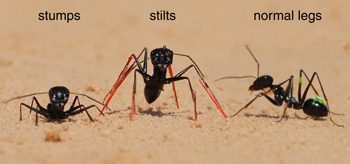In Peter’s workshop today we learnt about waves and vibrations. So what is a vibration? Where do you come across vibrations? And what happens during a vibration?
A vibration is the forward and backward motion of an object in a regular pattern. Vibrations can be so fast that you cannot see them. Vibrations start of big and become smaller and smaller unless energy is provided to keep the waves big. These vibration make sound occur.

Vibrations are detected by the ear. Once the sound travel to our ear, our ear drum vibrates and these vibrations are passed through the three small bones (called ossicles) to a spiral structure called the cochlea. Signals are passed from the cochlea to the brain through the auditory nerve, and our brain interprets these signals as sound.
We come across vibrations in every day life. A major vibration you would find it to communicate without is your vocal cords! Your vocal cord vibrate when you speak to make sound. In school when you ping a ruler or elastic band over an object you can often see the vibrations, the waves going backwards and forwards. If you go to a music festival and stand beside the huge loud speakers you can see and hear the bass vibrating the speaker. You can see and hear vibrations when they are at low frequencies.
Sound travels outwards in oscillations (backwards and forwards motion), in all directions, from the equilibrium point. The air around the equilibrium point creates the sound waves. Sound travels in longitudinal waves. Waves are made up of compressions and rarefactions. Compression happens when molecules are forced, or pressed, together. Rarefaction is just the opposite, it occurs when molecules are given extra space and allowed to expand.

Sounds waves need a medium to travel through, they will travel in a gas, liquid or solid – not empty space. The vibrations shake up the particles around them and these particle create a domino effect for the sound the travel. You can experiment with these three forms by making string telephones, talking underwater and putting a drinking glass to a wall.
 To make something louder you need to add more energy to it, the term amplitude can be used to refer to loudness. Amplitude is the maximum height of the wave from its resting position – the greater the amplitude, the louder the sound. Pitch is to do with the frequency or number of vibrations per second. Frequency is measured in hertz (Hz). The closer together the waves are and the higher the pitch. On a guitar sting, the shorter the sting the higher the pitch will be as the vibration have less material to cover therefore the pattern of oscillations is more regular.
To make something louder you need to add more energy to it, the term amplitude can be used to refer to loudness. Amplitude is the maximum height of the wave from its resting position – the greater the amplitude, the louder the sound. Pitch is to do with the frequency or number of vibrations per second. Frequency is measured in hertz (Hz). The closer together the waves are and the higher the pitch. On a guitar sting, the shorter the sting the higher the pitch will be as the vibration have less material to cover therefore the pattern of oscillations is more regular.
At the end of Peter’s workshop we got to experiment with vibrations and Beth, Beth and I experimented with music.

